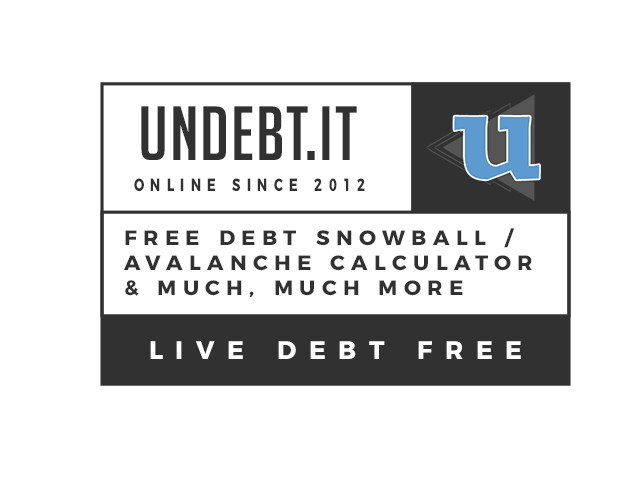Debt repayment strategies can feel like a heavy burden, but with the right approach, you can manage and repay it effectively. In this blog post, we’ll explore various debt repayment strategies, debt management programs, debt payoff plans, the pros and cons of debt relief programs, and debt consolidation for bad credit. We’ll also provide potential solutions like the debt snowball, debt avalanche, highest monthly payment first, highest monthly interest paid, and debt-to-interest ratio methods. By mastering these debt repayment strategies, you can take control of your finances and work towards a debt-free future.

Table of Contents
At Team Savvy, we stand firm in our commitment to deliver content that remains independent of advertiser influence or payment. While we do generate revenue through certain links to companies and deals featured on our site, rest assured that our integrity and commitment to unbiased content remain paramount. For further details, explore our guarantee.
To get started on your journey to financial freedom, be sure to check out our Free Debt Repayment Tool. This tool can help you track your progress and visualize your path to becoming debt-free.
Understanding Debt Repayment Strategies
1. Debt Snowball Method
The debt snowball method involves paying off your smallest debts first while making minimum payments on your larger debts. Once the smallest debt is paid off, you move to the next smallest, and so on. This strategy can build momentum and motivation as you see debts disappearing quickly. To better track your progress and manage your payments, consider using a debt repayment calculator. This tool can help you visualize your journey to becoming debt-free.
2. Debt Avalanche Method
The debt avalanche method focuses on paying off debts with the highest interest rates first. This approach can save you money on interest payments over time and help you get out of debt faster. A debt repayment calculator can be invaluable in showing how much interest you can save and how quickly you can eliminate your debt using this method.
3. Highest Monthly Payment First
This strategy involves paying off the debt with the highest monthly payment first. By eliminating the largest payment, you can free up more cash each month to apply to other debts. Using a debt repayment calculator can help you see the impact of this strategy on your overall debt repayment timeline.
4. Highest Monthly Interest Paid
Focusing on the debt with the highest monthly interest paid can reduce the amount of interest you pay overall. This strategy is similar to the debt avalanche method but specifically targets monthly interest charges. A debt repayment calculator can help you calculate the potential savings and time reduction from using this approach.
5. Debt-to-Interest Ratio (Balance/Interest Rate)
Calculating your debt-to-interest ratio involves dividing your debt balance by the interest rate. This method helps identify which debts are costing you the most relative to their balances and can guide your repayment strategy. A debt repayment calculator can assist in determining which debts to prioritize based on this ratio.

Exploring Debt Management Programs
Debt management programs (DMPs) are structured repayment plans set up by credit counseling agencies. These programs can help you consolidate your debt into a single monthly payment, often with lower interest rates and waived fees. Participating in a DMP can simplify your finances and make it easier to stay on track with your debt repayment goals.
Benefits of Debt Management Programs
- Lower Interest Rates: Credit counseling agencies can negotiate lower interest rates with your creditors.
- Single Monthly Payment: Consolidate multiple debts into one manageable payment.
- Waived Fees: Some fees, like late fees and over-limit fees, may be waived.
Drawbacks of Debt Management Programs
- Impact on Credit Score: Participating in a DMP may affect your credit score.
- Fees: Credit counseling agencies may charge setup and monthly maintenance fees.
- Commitment: DMPs typically require a commitment of three to five years
Crafting a Debt Payoff Plan
A debt payoff plan is a personalized strategy for paying off your debt. It involves listing all your debts, prioritizing them based on your chosen repayment strategy, and setting a timeline for becoming debt-free. Tools like budgeting apps and spreadsheets can help you track your progress and stay motivated.
Steps to Create a Debt Payoff Plan
- List Your Debts: Include all your debts, their balances, interest rates, and minimum payments.
- Choose a Repayment Strategy: Select the debt snowball, debt avalanche, or another method.
- Set a Timeline: Determine a realistic timeline for paying off each debt.
- Track Your Progress: Use tools to monitor your payments and celebrate milestones. A debt repayment calculator can be particularly useful in setting and tracking these goals.
Weighing the Pros and Cons of Debt Relief Programs
Debt relief programs can offer a way out of overwhelming debt, but they come with pros and cons. These programs include debt settlement, bankruptcy, and debt management plans.
Pros of Debt Relief Programs
- Reduced Debt: Debt relief programs can significantly reduce the amount you owe.
- Single Payment: Simplifies your finances with a single monthly payment.
- Debt Forgiveness: In some cases, a portion of your debt may be forgiven.
Cons of Debt Relief Programs
- Credit Impact: These programs can negatively impact your credit score.
- Fees: Debt relief programs often come with fees that can add up.
- Tax Implications: Forgiven debt may be considered taxable income.
Debt Consolidation for Bad Credit
Debt consolidation involves combining multiple debts into a single loan, often with a lower interest rate. This can be challenging with bad credit, but options are available.
Options for Debt Consolidation with Bad Credit
- Secured Loans: Using collateral, like your home or car, to secure a consolidation loan.
- Credit Unions: Some credit unions offer debt consolidation loans to members with bad credit.
- Debt Management Programs: As mentioned earlier, DMPs can help consolidate your debt.
Why You Should Use a Debt Repayment Tool
Managing multiple debts can be overwhelming, but a debt repayment tool can make the process simpler and more efficient. With features like tracking your progress, visualizing your debt payoff timeline, and providing detailed reports, a debt repayment tool can keep you motivated and on track. It can also help you compare different repayment strategies to find the one that works best for your situation. By using a debt repayment tool, you can gain a clear understanding of your financial progress and make informed decisions to reach your debt-free goals faster.
Conclusion
Mastering debt repayment strategies and understanding your options can help you regain control of your finances and work towards a debt-free future. Whether you choose the debt snowball, debt avalanche, or another method, the key is to stay committed and track your progress. A debt repayment calculator can be an invaluable tool to help you manage and visualize your debt repayment journey, regardless of the strategy you choose. Remember, managing debt is a journey, and every step you take brings you closer to financial freedom.
To take the first step towards becoming debt-free, try our Free Debt Repayment Tool. It can help you plan, track, and achieve your debt repayment goals efficiently.


